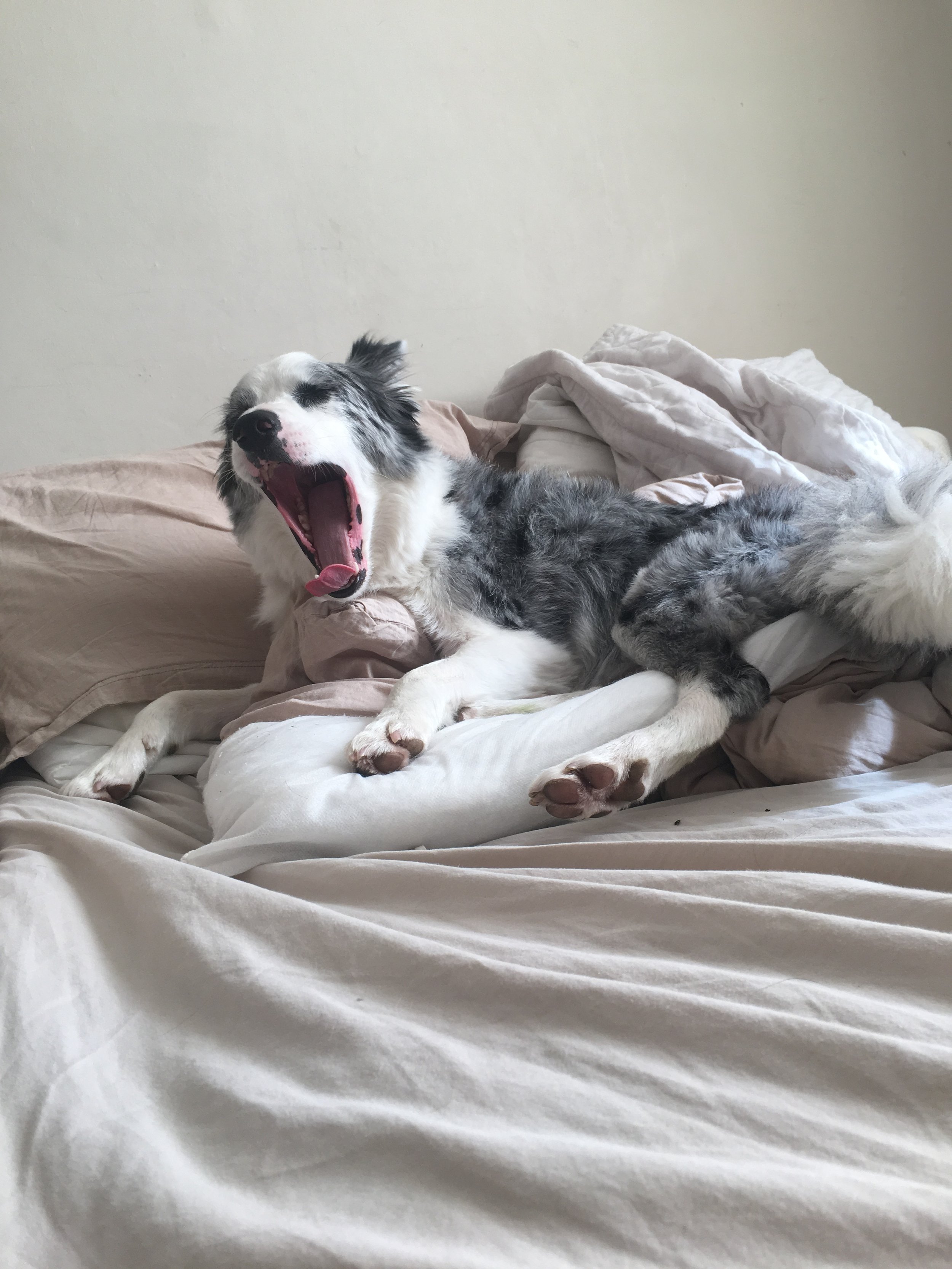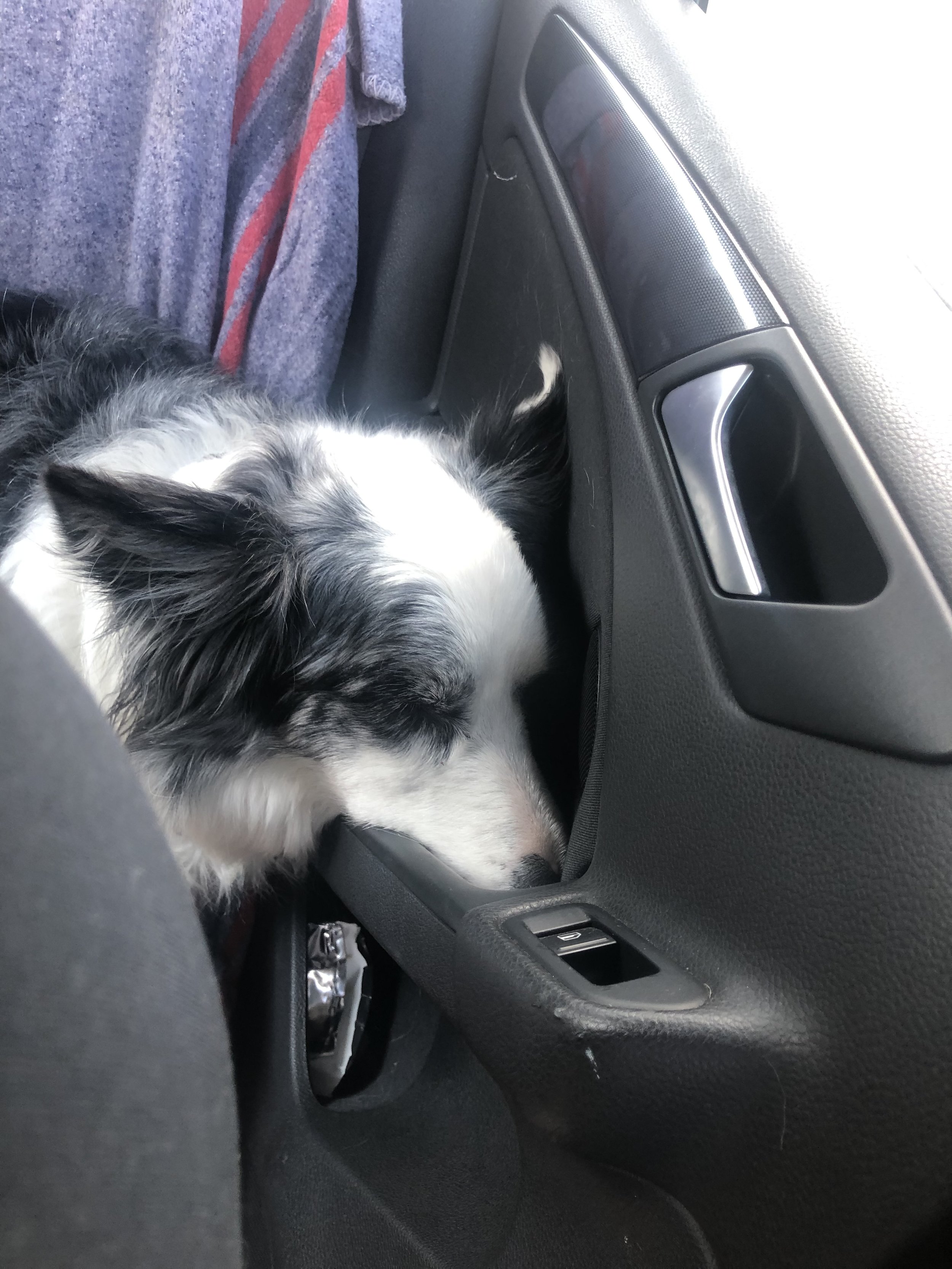3 Ways to Understand Your Dogs Language
Even though your dog cannot speak to you to tell you how they’re feeling and what they want, this doesn’t mean they don’t tell you in other ways. As an animal physiotherapist it's our job to interpret our clients' communication to identify what they need to improve their wellbeing. To help you learn your dog's language and communicate better with them we’ve created this short guide.
Body Language
Tail Wagging
We all know how to read this one right, it means our dogs are happy doesn’t it? Not necessarily… Tail wagging is a sign of emotional arousement, meaning our dogs could be happy, or excited but it also means they could be frustrated or anxious.
Generally speaking, the higher the waggy tail the more confident your dog is feeling, and the lower the more scared, remember both states could lead to an aggressive dog. Every dog is different, some breeds may neutrally hold their tail in tight curls, like pugs, and some hold them very low, like greyhounds. You should get to know what your dogs neutral position is and then to try and identify when they hold their tail in different positions and decipher what triggered the change.
Tummy Tickles
We know this one too! Your dog wants tummy rubs right!? If a dog who trusts you and is expressing other signs of happiness towards you then this is probably the case, they want tummy tickles!
However, if a dog expresses signs of fear or anxiety this can be a very submissive move and may be indicative of stress. In this case be cautious as dogs experiencing stress can be unpredictable. Give the dog space and allow them to come to you to sniff you and ‘check you out’ when they’re ready.
Posture
A stiff, tall and erect stance may be paired with a clenched jaw and ears on high alert. This is often indicative that your dog is readying themselves to fight so they may be feeling threatened or stressed. If this behaviour is directed towards a certain dog or situation try to avoid this as it may cause unnecessary stress to your dog, or the situation may escalate.
Relaxed dogs may be waggy tailed and open mouthed, standing tall with their muscles relaxed in an open body position. It’s useful to really get to know your dogs neutral relaxed posture and facial expressions as this can be a base to compare new body language and situations against.
A cowardly, low and closed body can indicate anxiety or stress. If you notice this, assess your situation and try to indicate and remove the source.
2. Facial expressions
Just like humans, dogs can tell us a lot using their facial expressions. All dogs emote slightly differently with their faces, with some dogs being more expressive with others. It’s also worth noting that darker fur colour, especially fully black, is more difficult for us and other dogs to read. This is why some dogs may be more apprehensive when socialising with black dogs, they can’t as easily read their facial expressions so don’t know what their intentions are.
Here’s a few common expressions that you can start to look out for:
Smiling
Some dogs will smile when they’re happy, however, sometimes this can be confused with your dog contracting their facial muscles to show the corners of their mouth this can actually be a sign of stress.
Head down
This may look like your dog is sad but this is more commonly a sign of submission, a normal action that indicates your dog is relaxed and happy. Look for other signs such as posture and behaviour to decipher if your dog is sad or relaxed.
Yawning
Dogs don’t yawn because they’re tired, dogs yawn either because they’re stressed or because they’re relieving stress somewhere in their body.
A common reaction to Physiotherapy treatment can be for dogs to yawn because a tightness or tension is being relieved in their body, likewise you may notice your dog yawn while stretching. Dogs may also yawn when stressed as a way of calming themselves and others in tense situations. We can also use yawning to calm our dogs down in tense situations such as a visit to the vets, because like with humans yawns are contagious for dogs too.
3. Behaviour
Barking and Growling
You may not be aware that the pitch, duration and repetition of your dog's bark can help us interpret what they’re trying to say.
Low-pitched growls and barks are often associated with fear and aggression, and can be used as a warming threat.
High-pitched growls tend to be more playful, and high-pitched barks are often indicative of excitement and maybe a sign they need to go outside to go to the toilet. All dogs barks and growls are different so get to know what your dogs ‘high’ and ‘low’ sounds like.
A whine often indicates a specific want, so pay attention to what they are whining at to identify what your dog needs.
The more repetitive a noise the more urgent it is, this could mean they need something really bad or they are experiencing an intense emotion, such as fear or excitement, for a new situation.
Destructive
If dogs destroy things when you’re out of the house this may be a sign of separation anxiety, they’re afraid and in need of attention. If a dog destroys things while you’re in the house they may be bored, get some interactive toys such as treat releasing toys or lick-it mats to stimulate them while in the house. If your dog destroys their soft toys this is them activating their prey drive. This doesn’t mean they are going to be aggressive towards people or other dogs
Shuttling down
Growing lethargic, spending more time alone and refusing to eat can all be signs or a fearful, ill or painful dog.
Be aware of your dogs physical signs, are they unhappy with you touching them in a particular area? Has something in the home changed recently? If this continues for more than a couple days, take your dog to a veterinarian for them to have a professional examination to rule out any illness or injury.
Summary
To effectively read and understand how your dog is feeling you should try to identify what their body language, facial expressions and behaviour are all telling you. Then you’ll be able to use all this information to decipher what your dog is thinking and how their feeling. This will enable you to be better equipped to provide your dog with what they need and for your bond to strengthen. The more time you spend looking at and focusing on your dogs non verbal communications the easier it will be for you to identify what emotion each one is portraying.
We hope you have been inspired to try and understand your dogs language and to try and identify how different things make them feel. Next week we will be looking at how to understand your horses language. If you would like any specific advice or want to find out more about how physiotherapy could help your dog visit our website or drop us a message.
Thanks for taking the time to learn with us 😁
Olivia & Jake 🐾
Impact Veterinary Physiotherapy





